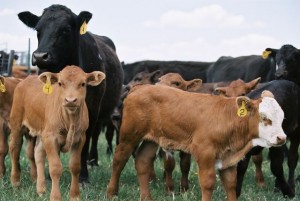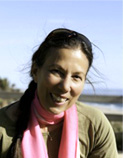Sometimes everything that should go right goes wrong.
Picture an ordinary mutt of a cow, black with a white face, probably a Hereford Angus cross. In cow terms she’s old, seven, maybe eight years on this planet. Local parlance labels her a gummer, a concise way of explaining that she no longer has many, if any, teeth left with which to chew. Without teeth she can’t properly grind and mash up her feed, thus opening herself to malnourishment, which in turn makes her prone to sickliness. On top of all that, she can’t see well anymore, though this is no one’s fault in particular. Actually, she’s basically blind. None of this is a surprise, because we bought her that way.
She was pregnant when she arrived at the ranch in the fall, the ringer in a group of otherwise healthy and thriving cows, all pregnant, which we’d purchased at auction. If we wanted them, we had to take her. Through the winter she got weaker and weaker. Still, she surprised us not only by making it through, but by giving birth to a strapping black bull calf in April. Ignoring his color, we named him Blizzard, on account of the wild spring snow storm blowing the night of his birth.
The old cow proved to be a good mother, which is what a lifetime of experience will do. She got the calf up and moving, licked him, let him nurse as much as he wished. There’s no doubt a calf will grow better from his mother’s milk than from formula, and we wanted to keep the two of them together as long as possible. So we tended to her daily, plying her with supplements and extra feed, hoping to keep her going until the proper weaning time in the early fall.
Now picture Fergus, a large, fat Highland bull. He has a pink nose, a rough and shaggy cinnamon coat and carries a spread of horns about 5 feet wide. Fergus and his herd were on our ranch temporarily, as a favor to their owner. “I have nowhere to take my cows,” our friend Owen had said. “Could I bring them to your place?”
It seemed like a good match. Highland cattle, coming from the rugged hills of Scotland, thrive in cold climates. We had a suitable temperature for them, with plenty of raging wind to make it even more miserable out of doors. More important, we had literally tons of cow hay left from the summer harvest and no market for it. We told Owen to bring his herd up and we’d feed them till June. It didn’t hurt that Owen regaled us with tales of Fergus being friendly enough to amble into his kitchen. “I’m not sure I want to share my kitchen with a bull,” I said to Bernard. “But I’d like to see him there once, just for the picture.”
Neighbors had an ill-concealed chuckle when the long-haired, horned herd of Highland cattle arrived. A handful drove over and parked on the highway above the pasture, to stare for a bit. Some couldn’t help themselves, driving right in to ask us, politely, whether we’d lost our mind. They made no secret of their belief that you never mix horned cattle with polled, “polled” being a fancy word for cows with no horns. Others just said bluntly that the safest way to pasture long-horned cattle was to place them somewhere in the next county and even that might be too close.
We were not altogether unmindful of the prevailing wisdom. After all, it wasn’t rocket science to deduce that an animal with long sharp things sticking sideways out of its head might get them stuck someplace they didn’t belong. But there was the small matter of those stacks of brown unsavory hay. Horses couldn’t eat it. Cows, with their double stomachs, could. Still, much of ranching wisdom comes from hard-earned experience and we didn’t want to buck convention entirely. We put the Highland herd in a separate pasture, fed them lavishly, gave them plenty of water and salt, and in general offered them no incentive to wander away from their new territory.
This story’s not over yet. Continue on to Part 2











